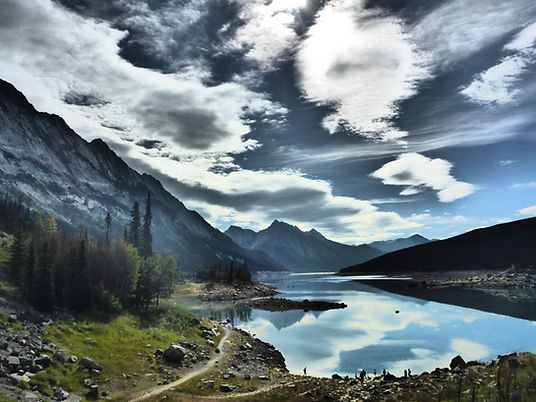GLEON Methane Project - MetOx
- tdelsontro
- Jan 3, 2018
- 3 min read
Methane (CH4), a potent greenhouse gas, is almost consistently oversaturated in global freshwaters (i.e., lakes, reservoirs, rivers/streams). Thus, inland waters are continuously emitting CH4 and, cumulatively, at rates high enough to make them a significant source of atmospheric CH4. Moreover, as CH4 is capable of ~28-34 times more radiative forcing than CO2. inland waters are in fact contributing to climate change, while simultaneously being impacted by it. Despite the obvious importance of CH4 emissions from freshwaters, our understanding of CH4 dynamics remains lacking, especially compared to CO2.
The ubiquitous CH4 oversaturation observed in surface waters, particularly in lakes and reservoirs, remains somewhat of a mystery. The most commonly known methanogenic processes occur in anoxic environments, typically in lake sediments, that can be quite a distance away from surface waters depending on the depth and size of a lake. Yet, most studies find that all lakes, even the largest ones, exhibit oversaturation in their center, leading to what has been termed the ‘methane paradox’ (e.g., Grossart et al. 2011). Dissolved CH4 found in the center of a lake has three potential sources: (1) diffusion from sediments and the water column below4, (2) dissolving bubbles emanating from sediments below, and (3) advection from the littoral zone where both diffusion and ebullition from sediments supplies CH4 to shallow waters. However, we also now recognize that CH4 can be produced in well-mixed, oxic environments (i.e., epilimentic waters), although the exact mechanism by which this occurs is not well constrained.
While several studies have known found evidence for CH4 production in oxic waters, debate remains as to how prevalent of a phenomenon it is globally. A recent study that analyzed surface CH4 concentrations and stable carbon isotopic signatures in 14 lakes across Quebec and surrounding areas found that 70% of the lakes exhibited the potential for CH4 production in their oxic surface waters. A recent detailed study of a single Swiss system suggested that ~90% of its total CH4 emission was due to CH4 produced under oxic conditions, while others have found less of a contribution (i.e., 20%). To date, studies recognizing the possibility of this methanogenic process and its potential to significantly contribute to total CH4 emissions from a system have been scarce.
Project Objective
The objective of this project is ultimately to test for the presence of CH4 production under oxic conditions at a global scale as well as on a temporal scale. We will achieve this by following the sampling regime and modeling techniques outlined in DelSontro et al. 2017 in lakes across the Gleon network. Assuming that vertical diffusion is negligible during stratification and that CH4 ebullition does not readily occur in pelagic waters, we will first test the physical transport model that described the spatial heterogeneity of surface CH4 in lakes of Quebec with data from Gleon lakes. Second, we will use the stable carbon isotopic signature of surface CH4 in each lake to investigate the presence of CH4 production relative to CH4 oxidation in the oxic surface waters of these lakes. We will sample several times over the stratified period to look at any temporal trends in surface CH4 dynamics during this period. We also hope to investigate CH4 dynamics in a few of the systems in more detail (i.e., vertically) in order to contribute to the overall knowledge gained by the surface sampling in a large number of Gleon lakes.
For more details about Gleon, see their website: http://gleon.org/
To get involved in our MetOx project, contact me.





Comments